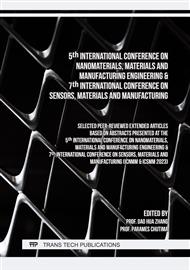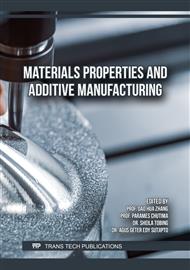p.87
p.95
p.105
p.113
p.121
p.127
p.133
p.139
p.147
Towards Smart Additive Manufacturing: Cost and Component Complexity
Abstract:
The global market size for Additive Manufacturing is predicted to be around USD 20 billion by 2025. The question arises whether conventional machining such as Computer Numerical Control (CNC) should be replaced by Additive Manufacturing (AM). The results presented in this paper are the outcome of an ongoing study. The overall objective of this study is a decision tool to decide which manufacturing route to adopt from a sustainability perspective. This paper will discuss the first phase of this study looking at the mechanical performance, cost and complexity of parts produced from AM and CNC. The results show that small parts are cheaper to fabricate by AM regardless of part complexity, whereas large, simple parts are cheaper to fabricate by CNC machining. These results might help in identifying manufacturing limitations of AM process in terms of mechanical performance and cost. These results will serve as inputs into a decision-making framework to decide on the most effective manufacturing route based on desired application such as in the spare parts in oil and gas industry.
Info:
Periodical:
Pages:
133-138
Citation:
Online since:
February 2024
Authors:
Price:
Сopyright:
© 2024 Trans Tech Publications Ltd. All Rights Reserved
Share:
Citation:



